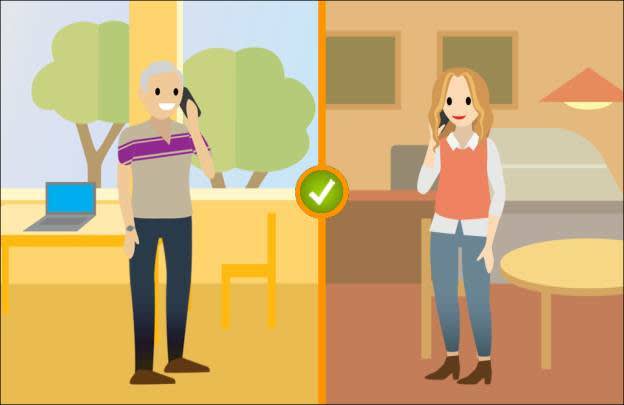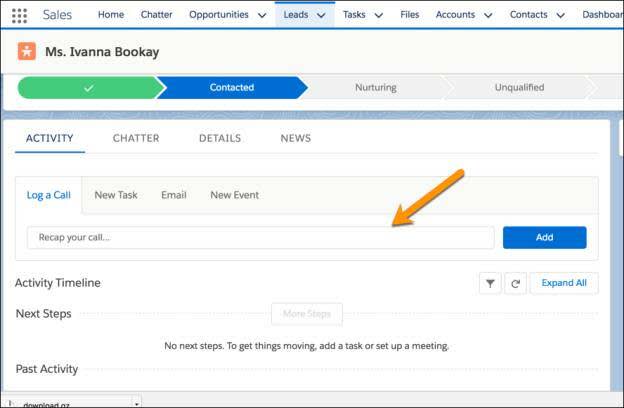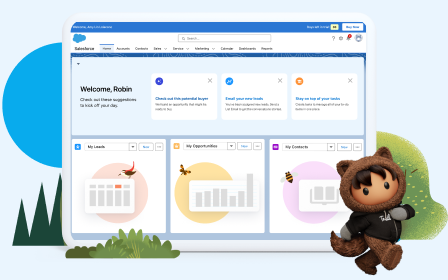Organize Your Data with Essentials
Learning Objectives
After completing this unit, you’ll be able to:
- Describe how Essentials organizes your data.
- Define the terms that Essentials uses to talk about storing data.
- Name the objects that you’ll use in Essentials.
How Essentials Organizes Your Data
Essentials organizes data into objects and records. But let’s give you a visual to help describe what these words mean.
Objects are like file folders. They contain a certain type of information, for example, contacts.
Records are like sheets of paper in the folder. They contain all of the information about a particular contact. For example, Aliah Jackson is one of Tracey’s favorite customers. Her contact record includes her address, phone number, and previous orders.
Data is all the information on that page. In this example that can include Aliah’s phone number, birthday, and favorite flower.
The navigation bar is like a shelf where you can find all of your objects. It’s at the top of the page.
To take a close look at a contact, select the contact object, and then select a record—it’s like pulling out a sheet of paper about that person from your folder.
Let’s take a minute to define a few other terms you're going to need to know as you continue on your Essentials adventure.
When we say |
We mean this |
|---|---|
Field |
A place where you store a value, like a name or address—using our folder example, a field is a line on the piece of paper. |
Org |
Short for “organization,” the place where all your data, configuration, and customizations live. You and your users log in to your org to access it. This is sometimes referred to as “your instance of Salesforce.” |
App |
A set of fields, objects, user permissions, and functionality to support a set of business processes. |
But unlike an actual folder, or a random note on your desk, your Salesforce data is stored in our trusted, secure cloud. Not only that, but it has an easy-to-use interface, which you can access both from the desktop and your mobile device. And since we know you're a small but growing business, we made sure you won’t need to hire a tech team to manage the system or any fixes—it’s all done for you by Salesforce.
Organize Your Data
Essentials uses objects to help you organize your data. To bring it full circle, imagine you’re back in school and you’ve been given a bunch of worksheets to do for homework. As a responsible student, you take your worksheets and sort them into each subject’s folder, right?
In Essentials, you take your customer information and put it into the corresponding object. Here are the most common objects you’ll come across.
-
Accounts are the companies you’re doing business with. For example, Sprouts is a company that supplies Dreamscape with seeds.
-
Contacts are specific people at the companies you’re doing business with. For example, Lizal Gromore is a contact at Sprouts.
-
Leads are potential business prospects. To prioritize which people are ready to buy, leads are classified as “qualified” when they’re ready to buy or “unqualified” if not. For example, Trattoria le Nuvole Blu has contacted Dreamscape about purchasing flowers every 2 weeks and getting them delivered.
-
Opportunities are deals that you’re currently working on. When you convert the lead, you create an account and contact along with an opportunity. For example, if the Trattoria chooses Dreamscape to source their flowers, they become an account, your key contact person at the restaurant is added as a contact, and your potential first deal becomes an opportunity tied to the Trattoria account.
Tracey just received an email from Ivanna Bookay inquiring about the cost of wedding arrangements. Tracey does the following to create a lead and add a task.
- Click the Lead tab.
- Click New.
- Enter in Ivanna’s contact information.
- Since Ivanna hasn’t committed to buying anything but has spoken with Tracey, select Working-Contacted as the Lead Stage.
- Click Save.
- Click New Task and assign Jay the task of calling Ivanna and giving him a due date for that task.
- Click Save.

Rather than losing yet another customer’s information on a sticky note, Tracey knows it’s stored securely and readily accessible. She assigns Jay with the task of making a follow-up call with the notes about Ivanna’s preferences right in line with the assignment. Jay gets a notification and within minutes, is ready to hop on the phone with Ivanna.

Log a Call
Right while he’s on the phone with Ivanna, he logs the call, so that Tracey knows the status.
- Click the Lead tab.
- Find and select Ivanna’s record.
- Click Log a Call.
- Enter the details of the call in the Comments field.
Ivanna is so impressed with Jay’s responsiveness and recommendations that she wants to come in and see a few test arrangements. Jay ends the call and confirms Ivanna’s visit to the shop over email. He updates the status of the lead to Closed-Converted to show that Ivanna is ready to buy.
Convert a Lead
- On your lead record, select Converted on the progress bar (also called a Path).
- Click Select Converted Status.
- On the Convert Lead page, complete the Account, Contact, and Opportunity fields.
- For Converted Status, select Qualified.
- Select Convert.

When Jay converts the lead to qualified, it automatically creates an account, contact, and opportunity for Ivanna’s wedding.

Tracey also has everything she needs to send a personalized thank you to Ivanna, and to start preparing for her visit at the end of the week. With Essentials, Dreamscape’s mighty team of two can spend less time on logistics while giving their customers a better experience than ever.
Next, let’s see some of the other features that help you get more done with Essentials.

